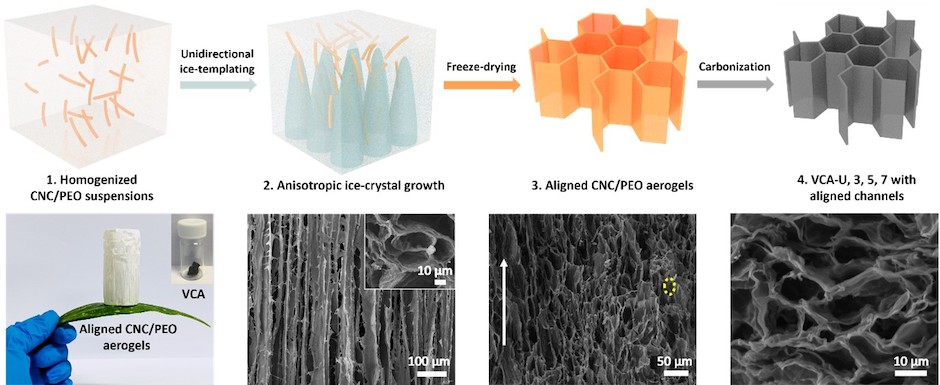
The team is said to have developed high-performance sodium and potassium ion batteries using sustainably sourced cellulose.
In a paper published in Advanced Functional Materials, scientists from the university's Bristol Composites Institute describe a novel controllable unidirectional ice-templating strategy which can tailor the electrochemical performances of next-generation post-lithium-ion batteries with sustainability and large-scale availability.
Currently, electric vehicles and hand-held devices such as mobile phones rely largely on lithium-ion batteries. Batteries have two electrodes and a separator, with an electrolyte between them carrying the charge. Problems associated with using lithium for these batteries include build up of metal inside the devices, which can lead to short circuits and overheating.
Alternatives such as sodium and potassium batteries have not historically performed as well in terms of their rate performance and ability for repeated use. This is due to the larger sizes of sodium and potassium ions, and their ability to move through the batteries’ porous carbon electrodes.
They also cannot be easily disposed at end-of-life, materials can be costly and mining of lithium in countries such as Chile, Bolivia and Argentina is associated with poor human rights records.
MORE IN ELECTRONICS AND COMMUNICATIONS
Bristol Composites Institute’s work, in collaboration with Imperial College, involves development of new carbon electrode materials based on the novel ice-templating system.
These materials are called aerogels, where cellulose nanocrystals are formed into a porous structure using ice crystals that are grown and then sublimated. This leaves large channels within the structure that can carry the large sodium and potassium ions.
Co-author Steve Eichhorn, professor of Materials Science and Engineering at Bristol University and an expert in cellullose-based technologies, said the team was ‘astounded’ at the new batteries’ performance.

He added that the team now hopes to collaborate with industry to explore whether the technology can be extended to a variety of other energy storage systems such as zinc-, calcium-, aluminium- and magnesium-ion batteries.
Jing Wang, lead author and a PhD student in the Bristol Composites Institute said: “Benefiting from the renewability of the precursor and scalability at relatively low cost in the environmentally benign synthesis process, this work could offer an appealing route to promote large-scale applications of sustainable electric vehicles and large-scale energy storage grids in the near future.”




Red Bull makes hydrogen fuel cell play with AVL
Formula 1 is an anachronistic anomaly where its only cutting edge is in engine development. The rules prohibit any real innovation and there would be...